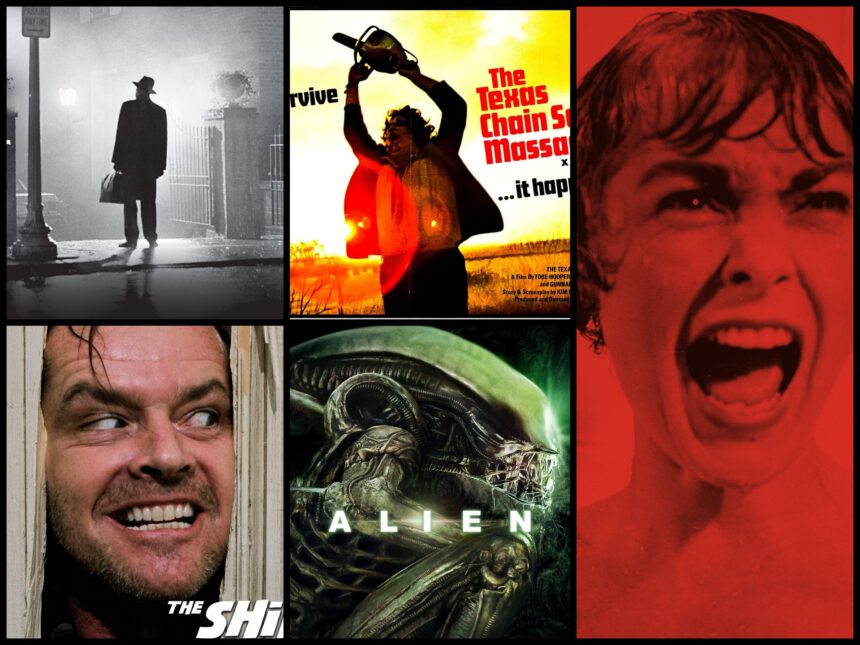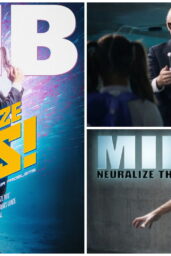When it comes to film genres, few evoke as visceral a reaction as horror. The genre has an unparalleled ability to tap into our deepest fears, yet it often gets dismissed as mere shock-value entertainment. In reality, horror has long been a platform for exploring social anxieties, challenging societal norms, and pushing the boundaries of cinematic storytelling.
In this article, we dive into the must-watch horror films that have defined and redefined the genre. These movies are more than just jump scares—they're artfully crafted tales that blend fear with beauty, pushing audiences to the very edge of comfort.
The Exorcist (1973)
- Director: William Friedkin
- Cast: Ellen Burstyn, Linda Blair, Max von Sydow
- Release Date: December 26, 1973

The Exorcist is often heralded as the greatest horror film of all time, and it's easy to see why. When it first hit theaters in 1973, audiences were not prepared for the sheer intensity of Friedkin's vision. Blending supernatural horror with stark human emotion, the story of a young girl possessed by a demon shocked viewers with its brutal imagery and theological depth.
The film grossed over $440 million worldwide, which was unheard of at the time for a horror movie. Beyond its financial success, The Exorcist left a legacy of psychological horror that filmmakers still draw from today.
The Shining (1980)
- Director: Stanley Kubrick
- Cast: Jack Nicholson, Shelley Duvall
- Release Date: May 23, 1980

Kubrick's The Shining is a masterclass in atmospheric horror. Adapted from Stephen King's novel, the story follows Jack Torrance (Jack Nicholson), who descends into madness while caring for an isolated hotel during winter. The film's terror doesn't just come from the supernatural but from the unraveling of Torrance's psyche, adding layers of psychological horror.
Despite initial mixed reviews, the film has since become iconic, with Nicholson's “Here's Johnny!” line etched into pop culture. Its unique cinematography, Kubrick's attention to detail, and chilling score make The Shining one of the most unsettling films ever made.
Alien (1979)
- Director: Ridley Scott
- Cast: Sigourney Weaver, John Hurt
- Release Date: May 25, 1979

Alien might be classified as science fiction, but it's also a quintessential horror film. Ridley Scott's “Jaws in space” follows a crew terrorized by an extraterrestrial creature aboard their ship. What makes Alien stand out is its claustrophobic tension— the crew is isolated in deep space, with no escape from the predatory force picking them off one by one.
The film not only introduced audiences to the enduring character of Ellen Ripley (Sigourney Weaver), but it also redefined what a horror movie could be by combining terror with stunning visuals and groundbreaking special effects.
The Texas Chain Saw Massacre (1974)
- Director: Tobe Hooper
- Cast: Marilyn Burns, Gunnar Hansen
- Release Date: October 11, 1974

Few films have reached the level of grim brutality seen in The Texas Chain Saw Massacre. Made on a shoestring budget of under $140,000, Tobe Hooper's film changed the horror landscape forever. This film's raw, documentary-style presentation made the horrific events seem all the more real. With its intense violence and terrifying antagonist, Leatherface, The Texas Chain Saw Massacre became a cult hit, leaving an indelible mark on the slasher subgenre.
It's not just the gore that resonates—Hooper's film touches on themes of cannibalism, family dysfunction, and the collapse of social order, making it as thought-provoking as it is horrifying.
Psycho (1960)
- Director: Alfred Hitchcock
- Cast: Anthony Perkins, Janet Leigh
- Release Date: September 8, 1960

Psycho is often considered the granddaddy of all modern horror films. Alfred Hitchcock's 1960 classic subverted every expectation of what horror could be at the time. Its shocking twist—where the lead character, Marion Crane (Janet Leigh), is killed off halfway through—was groundbreaking. Hitchcock cleverly manipulated audience sympathies, forcing them to identify with Norman Bates, a murderer hiding behind a mask of normalcy.
Psycho also pushed boundaries with its depiction of violence, earning it notoriety, but more importantly, it legitimized horror as a serious genre for film critics and audiences alike.
Objective Criticism:
Although these movies have made a significant impression on the horror scene critics are quick to point out weaknesses. Reflect on The Exorcist; despite its richly religious undertones it can feel remote to viewers not of that faith and the sensational crucifix scene is often deemed harmful. Even though the Texas Chain Saw Massacre is a historical milestone its extreme brutality drives away certain viewers viewing the film as callous instead of artistic.
Kubrick's The Shining has become a beloved classic; however starting with its release it sparked debate among fans.
Despite the negative feedback each of the films played an important role in the horror genre by offering unique insights.
Final Thoughts:
The realm of horror films has become a complex form that can convey powerful primal fears and intricate social insights. Fans of horror will find that The Shining and The Texas Chain Saw Massacre present stunning classics that are well worth watching. Beyond being just a source of amusement they showcase the anxieties and fears prevalent during that period while continually testing the limits of film art.
With both seasoned fans and beginners these films become a powerful lesson in manipulating fear. Turn the lights down low while gathered with popcorn and brace yourself for fear.












